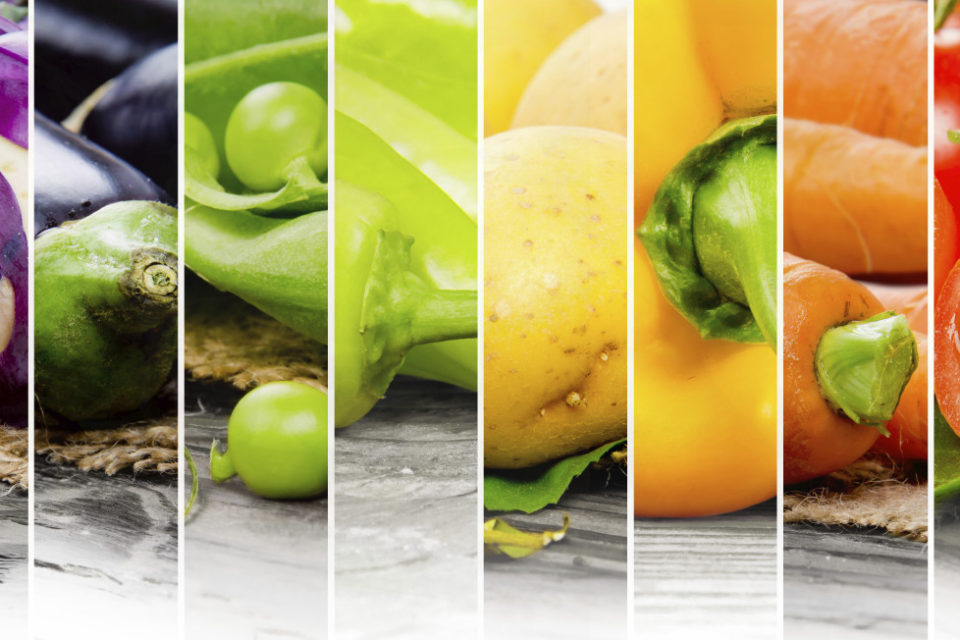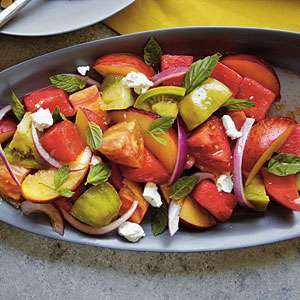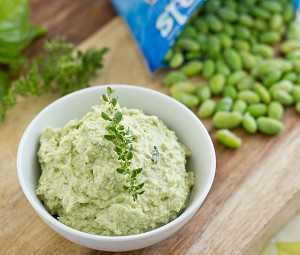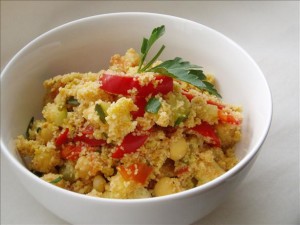Eating the (Antioxidant) Rainbow

Photo by Linda Vostrovska
Eating the (Antioxidant) Rainbow: Amy Rosenfeld, a dietician at Northern Westchester Hospital, says “nutrition wasn’t meant to come from a bottle.” “Mother nature,” she reminds us, “has provided us with the best multivitamin there is in the form of colorful fruits and vegetables.”
 “Packed full of nutrients, fruits and vegetables are nutritional powerhouses of antioxidants. Antioxidants work by protecting our cells against free radicals – molecules that cause damage to our cells and are linked with cancer and heart disease. Antioxidants stabilize free radicals, reducing our risk for such chronic diseases,” she told us.
“Packed full of nutrients, fruits and vegetables are nutritional powerhouses of antioxidants. Antioxidants work by protecting our cells against free radicals – molecules that cause damage to our cells and are linked with cancer and heart disease. Antioxidants stabilize free radicals, reducing our risk for such chronic diseases,” she told us.
“To get your full daily dose of antioxidants, the American Cancer Society recommends making half your plate full of fruits and vegetables, consuming at least 4 cups per day.” Amy told us that an easy way to ensure intake of a variety of antioxidants is to eat the rainbow by incorporating red, orange, yellow, green, blue and purple (the more vibrant the better) fruits and vegetables into your daily diet.
Below, Amy supplied us with more information on anti-oxidants, some creative ways to incorporate fruits and veggies into your diet … and a recipe or three.
Here are the antioxidant profiles of each color
 Red fruits and veggies have lycopene and anthocyanins, both powerful antioxidants connected with heart and prostate health. Examples include strawberries, tomatoes, raspberries, watermelon, red peppers, red cabbage, radishes, and rhubarb.
Red fruits and veggies have lycopene and anthocyanins, both powerful antioxidants connected with heart and prostate health. Examples include strawberries, tomatoes, raspberries, watermelon, red peppers, red cabbage, radishes, and rhubarb.
Orange/yellow fruits and veggies contain carotenoids, protecting us against cancers and heart disease, as well as supporting a healthy immune system. Examples include carrots, cantaloupe, pumpkin, sweet potato, papaya, pineapple, mangoes, and yellow squash.
Green fruits and vegetables are the richest source of all antioxidants overall. High in lutein, zeaxanthin, vitamin A, C and E, green fruits and  vegetables help to ward off all chronic diseases, including heart disease, cancers, and eye, joint, and skin diseases. Examples include kale, green beans, kiwis, honeydew, broccoli, Brussels sprouts, asparagus, and artichokes.
vegetables help to ward off all chronic diseases, including heart disease, cancers, and eye, joint, and skin diseases. Examples include kale, green beans, kiwis, honeydew, broccoli, Brussels sprouts, asparagus, and artichokes.
Blue and purple fruits and vegetables contain a high dose of flavanoids, resveratrol, phytochemicals and anthocyanins, defending our bodies against cancer, heart disease, and age-related diseases of the brain. Examples include beets, blueberries, pomegranates, eggplant, grapes, and figs.
12 great ways to get more fruits and veggies into your diet:
- Explore the farmers’ market or produce section in your grocery store and feature a new fresh fruit or vegetable every week. Try this delicious recipe with heirloom tomatoes and fresh watermelon and peaches.
- Make fresh fruits and veggies visible in the fridge and on the counter so you are reminded to eat them.
- Have one vegetarian dinner per week.
- Eat veggies instead of chips with your low-fat dips.
 Use lettuce wraps instead of tortillas or use spaghetti squash instead of traditional spaghetti.
Use lettuce wraps instead of tortillas or use spaghetti squash instead of traditional spaghetti.- Have frozen fruit with dark chocolate or low-fat frozen yogurt for a sweet treat.
- Add vegetables into your morning meal with a veggie omelet.
- Mix in vegetable purees, such as pureed zucchini into turkey meatloaf, pureed cauliflower in with mashed potatoes, or pureed red pepper into tomato sauce.
- Substitute applesauce, pureed carrots or pumpkin for butter in baked goods.
- Double the veggies and half the meat in almost any recipe you make!
- Make a fruit and veggie protein shake with low-fat milk or yogurt for after-school snack.
- Add slices of veggies onto your sandwich or homemade pizza.

















